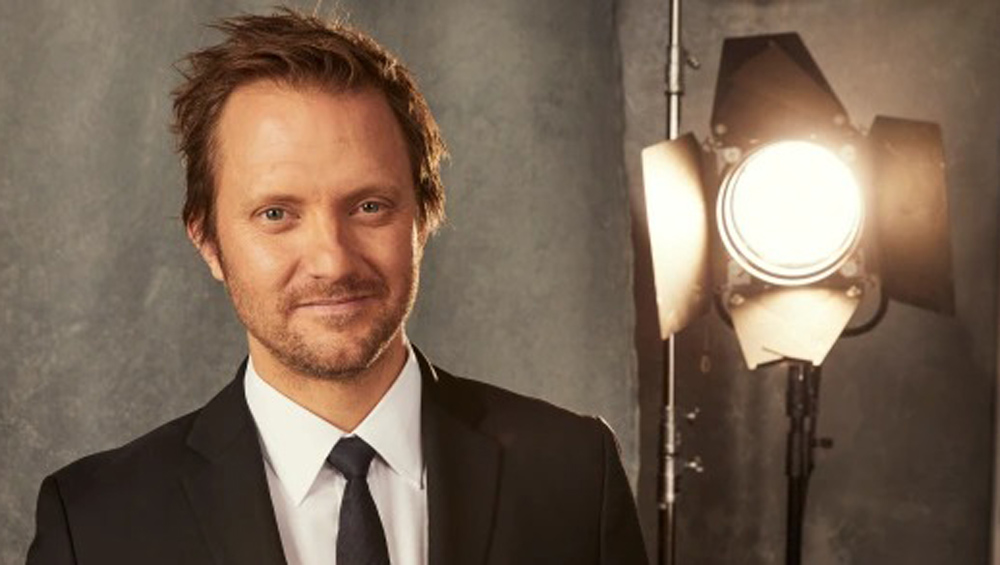
Can Nexstar Finally Turn The CW Into A Profitable Network?

Nexstar’s majority acquisition of The CW in early 2022 marks the third start for the fifth major broadcast network. Will the third time be the charm?
Ever since The CW was founded in 2006 with the merger of The WB and UPN, it has struggled.
To be sure, it offered many shows that found their way into the zeitgeist: Gossip Girl, the long-running Supernatural, Jane the Virgin, The Vampire Diaries, Crazy Ex-Girlfriend and the final wave of CW shows — an array of offerings, such as Arrow and The Flash, derived from Warner Bros.’ DC Universe.

The Flash
In 2011, The CW and its studio owners made the smart move to license its original series to Netflix for $1 billion as well as to international buyers, taking pressure off The CW’s financial model. Putting the shows on the upstart streamer gave them a cachet they did not have as solely broadcast series, and while young adults are scarce on broadcast TV, they came in droves to Netflix.
Those viewers discovered such shows as Riverdale and Arrow on Netflix and then some of them came to The CW to watch their broadcast premieres. The license fees covered the cost of Warner Bros.’ expensive shows and kept The CW afloat as basically a marketing window for the studios’ programs.
By 2019, however, all of the major studios were launching their own direct-to-consumer streaming services, and Warner Bros. ended the Netflix deal in order to put the programs on its own streaming service, HBO Max, recently rebranded under current Discovery ownership as Max.
When Warner Bros. was sold to AT&T and then to Discovery, and CBS was folded into the new Paramount Global, cost-cutting became the priority. In October 2022, Nexstar took over The CW by assuming its approximately $100 million in debt. Warner Bros. Discovery and Paramount Global each maintained a 12.5% stake in the network.
Profitable By 2025?
Now, Nexstar is undergoing the task of reinventing The CW again and has stated that it intends to make the network profitable by 2025. For the first time, its owners are trying to align The CW’s primetime programming with the demographics of viewers who watch the rest of the station’s newscasts and other programming — and those fall squarely within the 25-54 demographic and beyond.
In an era where people under 34 don’t really know the difference between a TV channel and a streaming network and people over 55 compose the majority of linear audiences, this makes sense. The question, however, is can Nexstar build a robust enough audience to keep the network in the black?
In its attempt to do this, Nexstar is reinventing The CW’s business model entirely — and integrating it into Nexstar’s overall business model — and that could be the key to profitability.
Nexstar is notoriously cost conscious. That means that while it is developing original programming, it’s unlikely that Nexstar is going to be burning money to try to find the next big hit. Instead, it will be looking for down-the-middle broadcast hits that appeal to a broad audience.
‘Singular Goal Is To Get Broader’

Brad Schwartz
“What you have seen from our recent announcements is a purposeful strategy to bring new viewers to The CW with different flavors of content that will attract more people,” says Brad Schwartz, The CW’s president of entertainment. “The most singular goal is to get bigger and broader.”
This fall, the network is airing such Canadian imports as drama Sullivan’s Crossing and comedies Son of a Critch, Children Ruin Everything and Run the ’Burbs. Schwartz had a great deal of success when he was running Pop TV with Canadian export Schitt’s Creek. Whether that kind of Canadian lightning can strike again remains to be seen, but Schwartz says co-productions and acquisitions can be a smart way to go about programming a network.
The CW also is programming shows that didn’t work on other services, including AMC’s 61st Street, starring Courtney B. Vance, and the off-HBO Max (now Max) FBoy Island, which is its main unscripted play this fall.
While these shows check a lot of boxes — they are relatively inexpensive, and they are already produced and thus writers’ strike-proof — they don’t necessarily represent The CW’s long-term strategy, but they do represent a starting point.
“As full of pride as we are about the fall schedule, we also know that this is going to be our worst schedule,” Schwartz says.
In addition, about half of The CW’s programming will be unscripted.
“We have 10 unscripted projects in production right now that we will be announcing soon,” Schwartz says.
The CW also is exploring the true-crime genre, which has been well-mined by others but may still attract viewers for a relatively low production cost.
Sliding Into Sports
The CW, like many local broadcasters, also is looking into sports, having famously licensed LIV Golf earlier this year. The Saudi-financed golf league is now in the process of merging with the PGA Tour, putting its broadcast rights in question, but seven more LIV Golf events will air on The CW this year as scheduled, with more likely to come as a result of the multi-year deal Nexstar signed with LIV and its financing company, Saudi Arabia’s Public Interest Fund (PIF).
 In early June, The CW also announced that it was picking up long-running NFL commentary show, Inside the NFL, which will run Friday nights on the network.
In early June, The CW also announced that it was picking up long-running NFL commentary show, Inside the NFL, which will run Friday nights on the network.
And it will continue to look at sports opportunities as they arise, Schwartz says. “As cable keeps declining and the RSNs are exploding, all of the big sports leagues are looking for new partners.”
Schwartz points to several examples. The NBA’s and the WNBA’s Phoenix Suns and Mercury in April announced that they had secured local broadcast deals with Gray Television-owned KTVK, KPHA and KPHE with a minimum of 70 games to be aired between the three stations. Cord-cutters also will be able to watch games via the stations’ branded app. MLB took over production for the San Diego Padres and their games will continue to be aired on local broadcast outlets as well as MLB.TV. And Nexstar’s own KTLA has rights to 15 of the NBA’s Los Angeles Clippers games.
“There are RSNs that will either shutter or will just not exist going forward,” says Mike Reynolds, senior writer at S&P Global Market Intelligence. “I think there are going to be opportunities in baseball and maybe in the NBA and NHL.”
Resetting National Distribution
As The CW sets its programming schedule, it also needs to reset its national distribution.
In May, CBS announced that its eight owned-and-operated stations that were The CW affiliates would not renew those affiliations, something that Nexstar executives said they knew was coming when they took over the network. While losing those stations could mean a loss of ratings in those markets, it shouldn’t significantly affect the network’s national distribution. Nexstar owns stations in four of those markets — Philadelphia, Sacramento, San Francisco and Tampa — and it needs to replace that distribution in four markets: Atlanta, Seattle, Detroit and Pittsburgh.
“In those four markets where Nexstar has stations, we’re expecting them to become multicast CW affiliates,” says Justin Nielson, principal analyst at S&P Global Market Intelligence.
 Nexstar also recently purchased KUSI San Diego from McKinnon Broadcast for $35 million, which gives it a foothold in Southern California.
Nexstar also recently purchased KUSI San Diego from McKinnon Broadcast for $35 million, which gives it a foothold in Southern California.
Nexstar says it has multiple suitors in each of the four markets, and it also has the ability to place The CW on one of its secondary digital channels if necessary.
“I believe that the content will be of suitable quality that the CW will ultimately get distribution, although there may be a reshuffling in certain markets,” says Fred Boxa, senior adviser, media and technology at business consultancy Arthur D. Little. “The distribution may not be the equivalent to what it was in terms of traditional broadcast. Will they get some falloff in ratings? I suspect the answer is yes, but time will tell, and it all comes down to how successful Nexstar is in keeping it as close to traditional distribution as they can.”
In addition, the availability of so many different platforms — websites, diginets, apps, streaming and FAST channels — makes the revenue picture, as it is tied to linear distribution, a bit less difficult. Nexstar’s goal is to own the rights to most of its content, Schwartz says, and then leverage it across all of its platforms.
“We need to get more rights to our content so we can exploit it in more places,” he says. “CBS and Warner Bros. would make shows that would go on The CW and be monetized with advertising and then those shows would go away. They’d be sold to Netflix and globally. It’s hard to operate a business long-term when you don’t have the rights to your shows, and you don’t have all seasons of your shows, and the only revenue point is advertising.”
One of the first examples of The CW investing in programming that it will own is Sullivan’s Crossing. The CW gave an early Season 2 pick-up to the show, which is premiering on the network this fall. The drama has already aired its first season on Canada’s CTV, where it was the highest-rated Canadian launch in more than two years and CTV’s highest-rated launch in three years.

This fall, The CW is airing such Canadian imports as drama Sullivan’s Crossing.
Sullivan’s Crossing is based on the best-selling books by Robyn Carr and stars Morgan Kohan (Batwoman), Chad Michael Murray (One Tree Hill) and Scott Patterson (Gilmore Girls) — all of whom are veterans of previous CW series. It’s produced by the team behind Netflix’s Virgin River, which has done well for the streamer. The CW is partnering with Reel World Management, CTV and Fremantle to produce the series.
“My wife hasn’t watched The CW in years, but she’s a big Virgin River fan. My cousin, who has never watched The CW, is watching LIV Golf on the weekends. We want to do things that others are not doing,” Schwartz says.
The company’s next distribution challenge comes up in August when Sinclair Broadcast Group’s affiliation agreements are up for renewal. Sinclair has reportedly not been happy with the lack of communication from Nexstar regarding some of its decisions and declined to be interviewed for this story. Another key affiliate, Weigel’s WICU Chicago, has another year on its affiliation agreement.
Holding On To Retrans
An additional key revenue stream for Nexstar comes from retransmission consent fees from its pay TV partners, a business model that Nexstar Chairman, President and CEO Perry Sook pioneered in the early 2000s.
Like everything else in the traditional broadcast business model, retransmission consent fees — and their companion, reverse network compensation — are under pressure. Cord-cutting and the dismantling of the cable bundle has cost cable and satellite TV providers dearly, and whether those carriers will be able to pony up to carry TV stations’ signals remains to be seen.
However, for the time being, retrans fees are holding for Nexstar. According to Tom Carter, Nexstar’s president and chief operating officer, on Nexstar’s last quarterly earnings call, “Nexstar delivered record quarterly distribution revenues of approximately $728 million, marking a 9% increase over the prior year. Revenue growth was driven by the renewal of distribution agreements in 2022 on improved terms and the annual rate escalators, as well as growth in virtual MVPD [multiplatform video program distributors] revenue and the inclusion of the CW.”
“Our growth,” Carter said, “was achieved despite MVPD subscriber attrition and the ongoing impact of the removal of some of our partner stations’ carriage related to continued negotiations with certain MVPDs. Estimated year-over-year subscriber attrition was in the low to mid-single digits, which improved during the last quarter due to the positive impact of increased carriage of our CW, MyNetwork and independent stations on YouTube TV. Excluding the CW, our distribution revenue was up 6.8%.”
Offering Advertisers National Reach, Local Flavor
Nexstar also has taken a patchwork approach to create national reach for itself and sell advertising on that basis. In the past two years, Nexstar has acquired not only The CW, but also political publication and streaming channel The Hill, and it has converted former superstation WGN into national cable news network NewsNation. It also has two diginets, Antenna TV and Rewind. All of these offer national reach to advertisers, who can buy across Nexstar’s linear and digital platforms on local, regional and national bases.

Michael Strober
“We’re taking a client-first approach by leveraging every asset of our business from national, to local, linear and digital and bringing our content and our IP to help clients find the audiences that matter most to them,” said Michael Strober, Nexstar’s EVP and chief revenue officer, in a statement to TVNewsCheck. “Our goal is to deliver on their business objectives whether that’s reaching audiences through news, sports or entertainment programming on any of our platforms. It’s about letting our clients find their audience and the customers they care about wherever they are.”
Nexstar has spent the past few years putting the pieces of a national, regional and local content business together. This fall will see the first test of that strategy before the company heads into the 2024 presidential election, which means political money will start flowing for TV stations. Beyond that, the conversion to NextGen TV — also known as ATSC 3.0 — is in progress, which should offer broadcasters even more revenue-generating opportunities.
“When we first took these jobs, we asked ourselves, ‘how are we different? How are we going to compete in this media environment?’” Schwartz says. “It really became obvious to us that we have what nobody else has — a broadcast network that still reaches 120 million homes. People still want local news and sports. The local channel business is going to survive and thrive.”
























Comments (3)
AdamMadMan says:
June 14, 2023 at 10:07 am
Nexstar has an opportunity here with The CW, but I’ve been afraid they may just blow it. Most of their recent comments, including in this article, have more or less confirmed it. By treating audiences older than 50 as an inherent lost cause for broadcast television, the new CW execs have basically admitted that they refuse to put any effort into fixing the issue, instead focusing on squeezing what’s left out of the existing audience. That’s simply not going to sustain the future of network television – and I’m sure you’re thinking “Dude, everybody knows network television HAS no future!” Except the fact that many industries have suffered similar, seemingly irreversible slumps; film and video games come to mind. But both bounced back, and I don’t doubt broadcast could do the same.
In my opinion, much of the decline in ratings comes to the networks, most owned by major Hollywood studios, intentionally cannibalizing their linear networks. It started with the rise of Hulu, which initially allowed viewers to watch Fox and NBC shows the day after they aired; now, Disney, Paramount, and NBCUniversal are all siphoning resources away from their respective networks to move people to their streaming services, where they get all the potential money. Even Fox, which lost its studio, still maintains a deal with Hulu, and also bought Tubi. Now that The CW has no Hollywood loyalties, it could fix the issue, but noooo, easy money trumps actual effort towards real growth every time.
[email protected] says:
June 14, 2023 at 11:39 pm
If Sinclair doesn’t get a new deal with The CW WXSP becomes The New Home Of The CW in my opinion since Nexstar owns WXSP in West Michigan. I see Sinclair renewing with The CW wild card will be where Sinclair & Nexstar are in the same markets will Nexstar take The CW away from Sinclair in those markets? I could see them do what CBS did in Indy and last in U.P. Of Michigan when Nexstar lost CBS and then renewed with CBS.
Kenneth Thompson says:
June 15, 2023 at 3:31 pm
@[email protected]: Shut up, Ben Bruex, you have no idea what you’re talking about. You don’t work in TV, you don’t know how the TV industry works, and learn to use better grammar/punctuation next time.